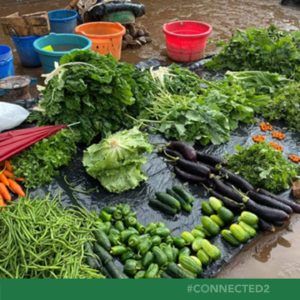November 11, 2021 • 2 min read
Why a Photo Essay?
This Photo Essay are the result of small groups of young people coming together and asking themselves what it meant to be #Connected2 to the bigger system.
Why Snap Shots?
If the Photo Essay was a book, each Snap Shop is a chapter telling stories from around the world.
For this last Snap Shot we wanted to finish our story by connected the dots. Globally, climate change and food systems are interconnected in ways we often forget.
For this reason these photos will bring us to meet the people behind this ‘connectedness’. From farmers in Honduras, to local fishermen in Africa, and home-growers here in Ireland. We as humans, from across our different homes, are affected by the everyday choices we make without even realizing it.
Argelia Bustillo’s Photo

credit: Argelia Bustillo
In Honduras, Central America, Agriculture is a vital sector & the top source of income for the poor – providing a tremendous amount of employment opportunities. It also heavily contributes to economic growth, especially as Honduras’ main exports are agricultural.
Thokozani Mphonde’s Photo

credit: Thokozani Mphonde
In Malawi, Africa, we can see the local fishing process. Observe locals dragging in their lake net. It was cast in the early hours of the morning and is now brought back, in late afternoon. They separate the fish into different kinds, clean it & set it out to dry or take them to the marketplace to be sold.
Trevor Kakuba’s Photo

credit: Trevor Kakub
A changing climate affects planting & harvest in many regions. In recent years, heavy flood rains & droughts have prevented people planting & harvesting according to normal growing seasons. A lack of fair trade in many places forces co-workers into competition to provide the best goods at the lowest price.
Chris Macken’s Photo

credit: Chris Macken
Lets take a look at Ireland – many towns are offering allotments & community gardens, providing a foundation for community growing. In Bundoran, Donegal, 24 local people meet every Thursday morning 10AM-12PM. They begin in February, finishing at the end of October each year. They grow their own food in 20 beds allocated to them, bringing home their own produce. This project offers 30+ allotments to local families.
Emer Hayes’ Photo

credit: Emer Hayes
“How can we purchase a pineapple for 89 cents?” It really makes you think about the potential for exploitation & the difficulties in regulation of our global food system. Until we cast a critical eye on this phenomenon, we will not truly recognize the inequalities in current access to food & fair farming.
